Tag Archives: Science
Stargazing at Saguaro National Park – East
May 31 @ 8:00 pm – 10:00 pm
Star Party – Saguaro National Park – East
3693 S Old Spanish Trail
Tucson, AZ 85730
Great dark skies on the East side of Tucson at Saguaro National Park – East.
Star Party is open to the Public. Event is free but NPS admission fees apply.
The Tucson Amateur Astronomy Association will have several telescopes for astronomical viewing. We will observe Planets, Nebulae, Galaxies, Star Clusters and lots more.
Great opportunity to look through a variety of telescopes.
Weather dependent. For real-time updates, follow this event on the Tucson Amateur Astronomy Association Facebook Events Page: Tucson Amateur Astronomy Association | Facebook
Bernie Stinger
612-396-8839
astronomy-events@tucsonastronomy.org
Stargazing at Tucson Mountain Park – Juan Santa Cruz Picnic Area
May 17 @ 8:00 pm – 10:00 pm
Star Party @ Tucson Mountain Park – Juan Santa Cruz Picnic Area
Tucson, AZ (right next to Sonoran Desert Museum)
Viewing Location: Small side loop on East side of main loop.
Information: Great dark skies in Western Tucson. Star Party open to the Public. Cost: FREE.
Tucson Amateur Astronomy Association will have several telescopes for astronomical viewing. We will observe Planets, Nebulae, Galaxies, Star Clusters and lots more. Great opportunity to look through a variety of telescopes. Weather dependent.
For real-time updates, follow this event on the Tucson Amateur Astronomy Association Facebook Events Page: TAAA Facebook Events page
Event is FREE but REGISTRATION IS REQUIRED. Go to this link to register: https://tinyurl.com/MayStargazing
These events may fill up early.
Bernie Stinger
612-396-8839
astronomy-events@tucsonastronomy.org
Stargazing at Tumacacori National Historical Park
May 16 @ 8:00 pm – 10:00 pm
Join TAAA and the National Park Service for an evening of stargazing at Tumacacori National Historical Park . Address below.
The Tucson Amateur Astronomy Association (TAAA) will have several telescopes with operators for astronomical viewing in front of the Old Mission.
We will observe Planets, Nebulae, Galaxies, Star Clusters and lots more. Great opportunity to look through a variety of telescopes.
Event is free, no reservations required, but NPS admission fees apply.
Weather dependent, check back here prior to event for possible updates on day of event.
Bernie Stinger
612-396-8839
astronomy-events@tucsonastronomy.org
Stargazing @ Picacho Peak State Park
May 3 @ 8:00 pm – 10:00 pm
Truely dark skies at a scenic location – Picacho Peak State Park
Star Party is open to the Public. Event is free but park admission fees apply.
The Tucson Amateur Astronomy Association will have several telescopes for astronomical viewing.
We will observe Planets, Nebulae, Galaxies, Star Clusters and lots more.
Great opportunity to look through a variety of telescopes at a really dark location.
Weather dependent. For real-time updates, follow this event on the Tucson Amateur Astronomy Association Facebook Events Page: https://www.facebook.com/TucsonAstronomy/events
Bernie Stinger
612-396-8839
astronomy-events@tucsonastronomy.org
Stargazing at Oracle State Park
April 26 @ 7:30 pm – 9:30 pm
Viewing Location: Kannally Ranch House
- Star Party telescope viewing (7:30 – 9:30pm)
Information: Great dark skies just north of Tucson at Oracle State Park.
3820 E Wildlife Dr., Oracle, AZ 85623
Star Party open to the Public. Admission fees for entrance into Oracle State Park apply.
Tucson Amateur Astronomy Association will have several telescopes for astronomical viewing. We will be observing the Moon + Planets, Nebulae, Galaxies, and Star Clusters.
Great opportunity to look through a wide variety of telescopes. Weather dependent.
For real-time updates, follow this event on the Tucson Amateur Astronomy Association Facebook event page: TAAA Facebook Events page
Also: Check the Oracle State Park website for additional information and activities that day:
Star Party at Oracle State Park | Oracle State Park (azstateparks.com)
Bernie Stinger
612-396-8839
astronomy-events@tucsonastronomy.org
Stargazing at Saguaro National Park – East
April 25 @ 7:30 pm – 9:30 pm
Star Party – Saguaro National Park – East
3693 S Old Spanish Trail
Tucson, AZ 85730
Great dark skies on the East side of Tucson at Saguaro National Park – East.
Star Party is open to the Public. Event is free but NPS admission fees apply.
The Tucson Amateur Astronomy Association will have several telescopes for astronomical viewing. We will observe Planets, Nebulae, Galaxies, Star Clusters and lots more.
Great opportunity to look through a variety of telescopes.
Weather dependent. For real-time updates, follow this event on the Tucson Amateur Astronomy Association Facebook Events Page: Tucson Amateur Astronomy Association | Facebook
Bernie Stinger
612-396-8839
astronomy-events@tucsonastronomy.org
Stargazing at Catalina State Park
April 18 @ 7:30 pm – 9:30 pm
Star Party at Catalina State Park – Tucson, AZ
Viewing Location: At the Ringtail Group Area for the Star Party. (Public parking at the Gila Monster Group Area which is a 2-minute walk from the Ringtail Group Area)
Great dark skies just north of Tucson at Catalina State Park.
Star Party open to the Public. Admission fee for entrance into Catalina State Park.
Tucson Amateur Astronomy Association will have approximately 10 telescopes for astronomical viewing.
We will observe Planets, Nebulae, Galaxies, Star Clusters and lots more. Great opportunity to look through a wide variety of telescopes.
Weather dependent. For real-time updates, follow this event on the Tucson Amateur Astronomy Association Facebook Events Page ((4) Tucson Amateur Astronomy Association | Facebook).
Additional details will be posted here and on Facebook as we get closer to the event.
Bernie Stinger
612-396-8839
astronomy-events@tucsonastronomy.org
Planets of the Month: November 2024
By Erich Karkoschka

Mercury is visible during dusk until the 25th around 6 pm, but it is low and difficult to find.

Venus is 20 degrees to the upper left of Mercury, setting around 8 pm. It is finally setting well after the end of twilight so that it becomes very obvious.
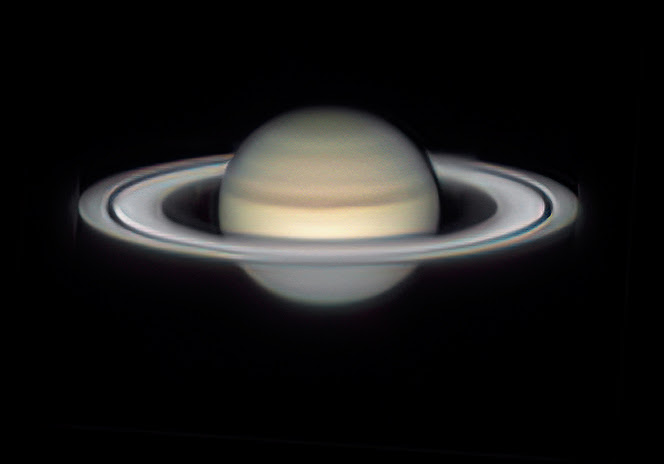
Saturn transits 50 degrees high around 8 pm and earlier later this month. Its rings are 5.4 degrees open, quite thin compared to the average view. From now until next spring, the rings will close completely.
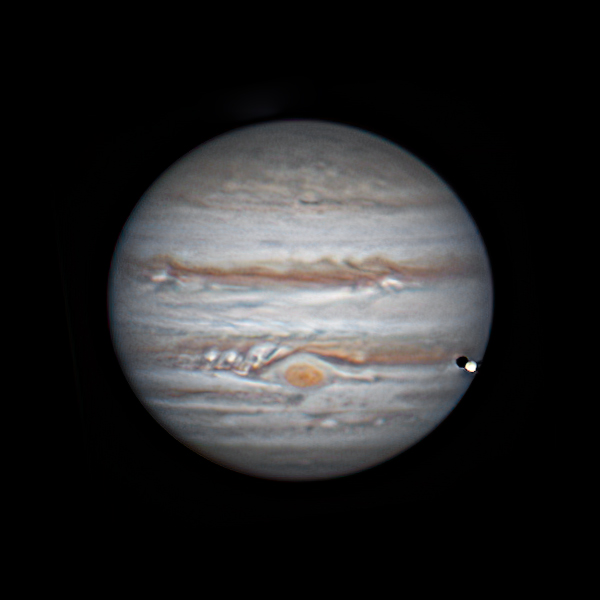
Jupiter is rising in Taurus about when Saturn transits. Its magnitude of -2.8 can cause visible shadows on the ground at very dark sites.

Mars is rising around 10 pm, so that all bright planets are visible in the evening sky this month. Its magnitude goes negative, and its size becomes larger than 10 arc-seconds this month. This is the start of the good period to observe Mars with telescopes.

Uranus and Neptune are located between Jupiter and Saturn with Uranus closer to Jupiter and Neptune closer to Saturn. Uranus is just 6 degrees south of the Pleiades.
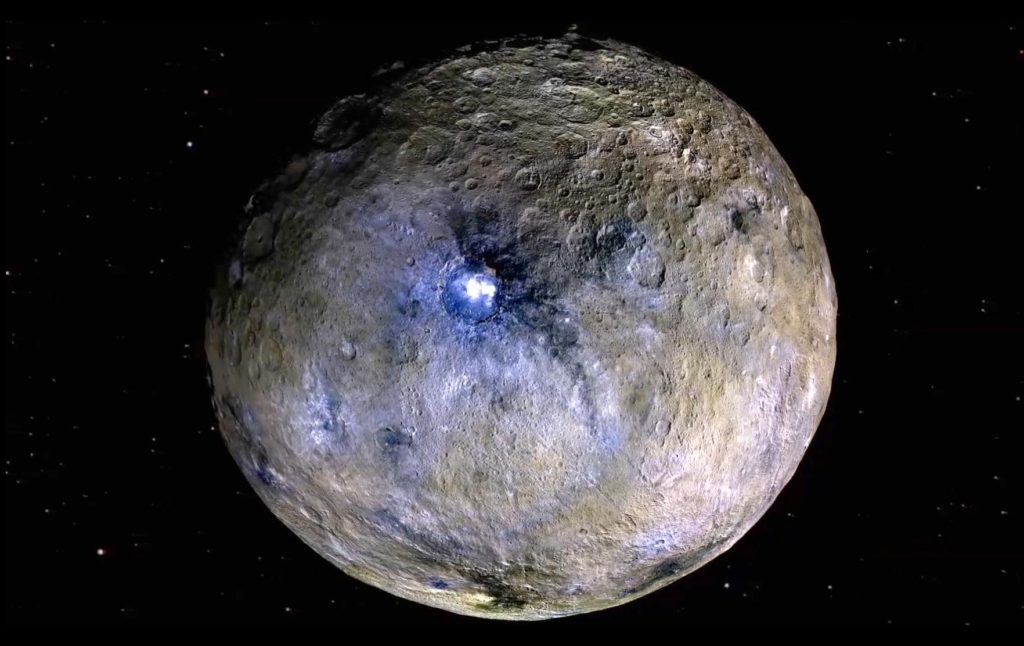
Minor planet (15) Eunomia of magnitude 8 transits 87 degrees high in Auriga.
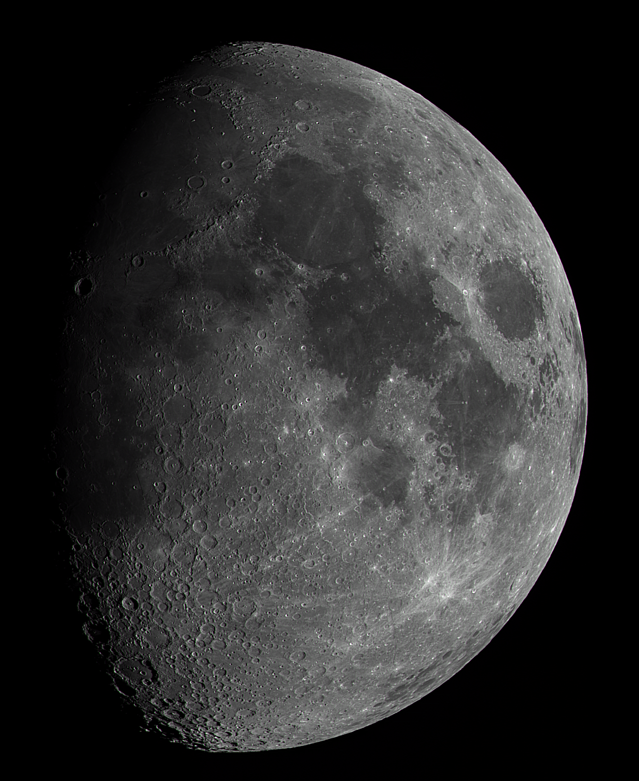
The Moon is new twice this month, on the first and the last day of the month. It is first visible on the 3rd near Mercury, then on the next day near Venus. On the 12th, it occults Neptune at 6:40 pm, an event that lasts around 5 seconds compared to milliseconds for occultations of stars. On the night of the 15th-16th, it occults many stars of the Pleiades, although the Full Moon makes them hard to see. On the 27th, it occults Spica for most of North America, although Tucson is a near miss with both extremely close together at 4 am at the eastern horizon.
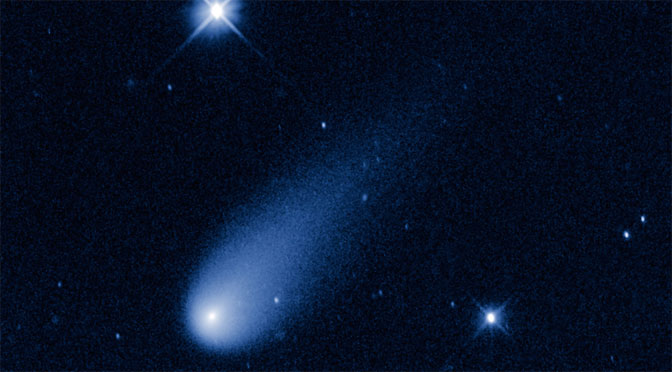
Comet C/2023 A3 Tsuchinshan-ATLAS moves from Ophiuchus to Aquila as it fades more and more from being visible in binoculars.

